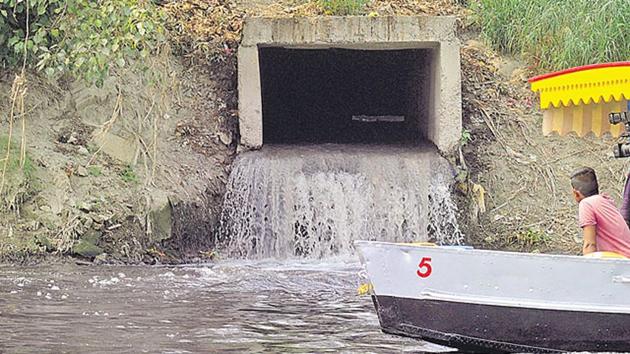Delhi contributing more ammonia to Yamuna than Haryana, says CPCB report
In some drains, such as the ones at Delhi Gate, Najafgarh and Sonia Vihar, the ammonia level was at least 35–45 times higher than what the Delhi Jal Board is equipped to treat
The level of ammonia in Yamuna has breached the safe limit in 13 of 17 places between Haryana and Delhi from where the Central Pollution Control Board had collected water samples for analysis.

Even though Delhi government had moved the National Green Tribunal on Monday, accusing the Haryana government for rising ammonia pollution in the river, the CPCB report revealed that most of the ammonia was coming from drains in Delhi.
In some drains, such as the ones at Delhi Gate, Najafgarh and Sonia Vihar, the ammonia level was at least 35–45 times higher than what the Delhi Jal Board is equipped to treat. The highest pollution on Haryana’s side was found to be in downstream Khojkipur at Panipat. It was around 10 times above the limit.
The DJB can treat river water in which ammonia level is less than 0.9 ppm. CPCB scientists said that human and animal waste in the river water is one of the primary factors behind the rising ammonia levels.
“CPCB scientists monitored the Yamuna, drains and water treatment plants on Wednesday and Thursday to ascertain the concentration of ammonia. The highest pollution was found in Delhi Gate drain followed by the Sonia Vihar drain, the Najafgarh drain and the ITO barrage,” said a senior scientist of the CPCB.
Following the report, the NGT on Friday directed the chief secretaries of Delhi and Haryana to hold a meeting on February 20 and come up with a solution.
Officials from Delhi Jal Board had earlier claimed that three water treatment plants at Wazirabad, Chandrawal and Haidarpur have not been running at full capacity since January 30 due to high levels of ammonia.
As a result water supply across the city, barring east Delhi, has been hit. East Delhi gets its water from the Upper Ganga Canal. The DJB distributes around 900 MGD of water in Delhi, out of which nearly 60% comes from Haryana.
“It may cause a huge and irreparable loss to the citizens of Delhi and has the potential for a grave health crisis and water crisis in the National Capital Region,” DJB had said in a release, earlier this week.
Chart:
Five most polluted places (values in ppm)
•Delhi Gate drain: 38 .0
•Sonia Vihar drain: 35.0
•Najafgarh drain: 31
•ITO Barrage: 24.9
•Barapulla drain: 21.0
Five least polluted
•Wazirabad concrete lined channel: 0.05
•Upstream Khojkipur, Panipat: 0.1
•Hathnikund Barrage: 0.6
•Okhla Water Treatment Plant: 0.8
•Wazirabad Reservoir: 1.4



